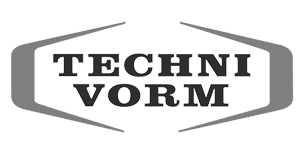The application of THT
When a circuit board is in the prototype stage, Through Hole Technology is a commonly chosen technique. This is because it is easier to replace through-hole components than components that are not continuously studded. In prototyping, Through Hole Technology components are easier to remove, therefore they are well suited test users. The disadvantage is that THT components are much larger.
What does the term THT (Through Hole Technology) mean?
THT stands for Through Hole Technology. It is a process of mounting on PCB components where the component is placed on one side and soldering takes place on the other side. The component has mounting legs that protrude through the PCB (using pre-made holes) and are soldered to the other side. Some people think that the THT has become somewhat obsolete with the advent of the SMT; however, this is not the case. Of course, many components are placed SMT because of the advantages this technique brings. But THT technique also has specific advantages. For example, connections between THT components and the circuit board are much stronger than with SMT connections. Through Hole Technology is a good choice to apply to components that must undergo environmental and mechanical stress. However, Through Hole Technology can also be a better choice at high temperatures.
The benefits of THT
The Through Hole Technology has several advantages. It is a very reliable technology. There is a strong connection between the circuit board and all the components. Because of this, many manufacturers still like to use Through Hole Technology. Within applications where a circuit board is mechanically loaded and under increased stress, Through Hole Technology is a widely used technique.
The difference between THT vs. SMT
There are distinct differences between Surface Mount technology and Through Hole Technology. SMT has brought a lot to solve common space problems in through-hole mounting. Components are also lead-free soldered SMT and are placed on the board surface. With the THT, components are larger, this provides a lower component density per unit area.
- With the SMT, the gasket density that can be achieved is higher. This is due to the components
- that can be mounted on two sides (if necessary).
- Surface mount technology has enabled applications with through-holes that first seemed impossible.
- The SMT is ideal for mass production, assembly costs can be significantly reduced per unit. This is not possible with the THT.
- Within the SMT, higher circuit speed can be achieved more easily, and this is due to the smaller size.
Choose Confed. Choose fast, reliable and quality.
Got curious?
Have you become curious about what we can do for you in this area? We would like to invite you to contact us. This can easily be done by phone or via our general email address. You can also send us a request via the contact page and we will get back to you as soon as possible.
Contact via:
info@confed.eu or tel: +31(0) 33 454 1340









